What are the plants cultivated in soilless culture
Soilless cultivation is the technology of cultivating plants completely with nutrient solution without soil, which is a major innovation in the way of human cultivation. Soilless cultivation not only grows fast, has high yield and good quality, but also liberates human planting activities from the shackles of soil, which opens up broad prospects for the industrialization and automation of agricultural and horticultural production. Do you know what kinds of plants are cultivated in soilless culture? now let me introduce them to you in detail.
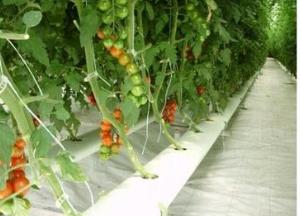
What are the plants cultivated in soilless culture
Many friends will ask what are the plants cultivated in soilless culture. I want to plant. Soilless cultivation involves a wide range of areas, including flowers and vegetables, but it has not been fully promoted yet. Common vegetables in soilless cultivation are: lettuce, chicory, kale, cabbage, rape, Chinese cabbage, bolting, big leaf mustard, kale, purple sunflower, watercress, celery, clover, amaranth, chives, potatoes and so on. Common flowers are: lily tortoise back bamboo, Milan, gentleman orchid, camellia, rose, jasmine, rhododendron, kumquat, evergreen, violet, Phalaenopsis, inverted golden bell, five-needle pine, Camptotheca, rubber banyan, Brazilian iron, begonia, ferns, palms and so on.
Generally, hydroponic plants have the following advantages: first, because water can evaporate freely, it plays a more obvious role in regulating air humidity than plants cultivated in potted soil in the same environment; second, hydroponic plants can omit some management work of potted soil, clean and hygienic, and easy to maintain. Third, if the selection of some roots can be exposed to the light of the plant, coupled with a suitable container, the whole plant can be ornamental, with higher ornamental value.
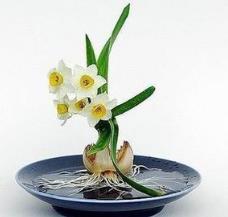
There are two kinds of hydroponic plants. One is aquatic flowers, which grow in water in nature, such as lotus and water lilies we are familiar with, and the other is hydroponic flowers, which generally grow in soil or cultivation media, such as daffodils and hyacinths. Because the indoor light is not enough, it is more suitable to cultivate the latter kind. In addition, they have low requirements for nutrients and can basically grow in tap water without adding nutrient solution. The suitable species in the family are green pineapple, hyacinth, rich bamboo, hanging orchid, flower and leaf evergreen, heart leaf vine green velvet, fine leaf millennium wood and so on.
These plants generally do not need special management. Containers with a certain volume for root expansion can be used, while glass containers with open mouth are more beneficial to maintaining water quality and root growth. When planting, you should avoid immersing the leaves in water so as not to cause decay; under suitable light conditions, you can quickly take root; when you find less water, add some water to prevent the root system from drying; when the water becomes dirty, take out the plant, clean the container, and rewater it.
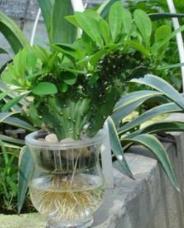
What are the plants suitable for soilless cultivation
Soilless culture can make the plant grow agile, strong, blossom more and early, big and fragrant, and resistant to cold and heat, less diseases and insect pests. The flowers that are usually easy to cultivate are: tortoise-backed bamboo, Milan, gentleman orchid, camellia, rose, jasmine, rhododendron, kumquat, evergreen, violet, Phalaenopsis, inverted golden bell, five-needle pine, Camptotheca, rubber banyan, Brazilian iron, begonia, ferns, palms and so on. Potted flowers change from soil culture to soilless culture, which can be carried out at any time. The specific operation process is as follows.
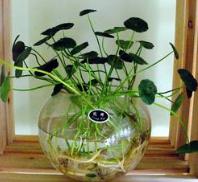
First, the manufacture of nutrient solution. Dilute the soilless culture nutrient solution sold on the market according to the regular multiple. You can also use the following formula to make your own nutrient solution. 1. Many elements: 3 grams each of potassium nitrate and magnesium sulfate, 5 grams of calcium nitrate, 2 grams of ammonium phosphate, 1 gram of potassium sulfate and 1 gram of potassium dihydrogen phosphate; 2. Trace elements: (using chemical reagents) disodium ethylenediaminetetraacetate 0.1 g, ferrous sulfate 75 mg, boric acid 30 mg, manganese sulfate 20 mg, zinc sulfate 5 mg, copper sulfate 1 mg, ammonium molybdate 2 mg; 3. Tap water 5 kg. Many elements are separated from trace elements to form a solution, and then mixed to form a nutrient solution. The amount of trace elements is very small, and it is not easy to weigh, so it can be manufactured by expanding multiples, and then the amount of trace elements can be extracted by the same multiple. For example, trace elements can be expanded 100 times to rematch into a solution, and then 1% of the solution can be obtained, that is, the required amount. The nutrient solution is non-toxic, odorless, clean and hygienic, and can be stored for a long time.
Second, take off the basin. Push the root system to the soil with your fingers from the hole at the bottom of the basin.
Third, wash the roots. Soak the roots with soil in water close to the ambient temperature to wash the soil in the rhizosphere.
Fourth, soaking liquid. Soak the washed roots in a mixed nutrient solution for 10 minutes to fully absorb nutrients.
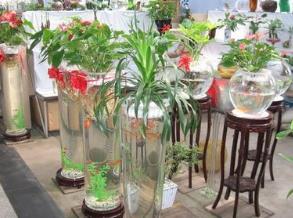
Fifth, filling basin and filling liquid. Wash the flowerpot, place tiles or fill plastic yarn in the bottom hole of the pot, then put a small amount of perlite and vermiculite in the basin, then put the plant into the basin and fill the root system with light ore such as perlite and vermiculite. Gently shake the flowerpot to make the ore close to the root system. Then irrigate the nutrient solution until there is an outflow from the bottom hole of the basin.
Sixth, strengthen the root system. Use quartz stone, axe chopping stone and other pieces on the root system to strengthen the root system and prevent lodging. Spray some water on the leaves together.
7. Handle the matter as usual. The demand for light, temperature and other conditions of soilless culture of flower bonsai is the same as that of soil culture. The growth time of the plant is irrigated with nutrient solution once a week, the dosage is determined according to the plant size, and the amount of flowers with slow leaf growth is reduced. In winter or dormant period, it is irrigated once every 30 days. Indoor foliage plants can make a living under low light conditions, so the amount of nutrient solution should be reduced, and the nutrient solution can also be used for foliar spraying. Usually pay attention to sprinkling water in order.
Second, take off the basin. Push the root system to the soil with your fingers from the hole at the bottom of the basin.
Third, wash the roots. Soak the roots with soil in water close to the ambient temperature to wash the soil in the rhizosphere.
Fourth, soaking liquid. Soak the washed roots in a mixed nutrient solution for 10 minutes to fully absorb nutrients.

Fifth, filling basin and filling liquid. Wash the flowerpot, place tiles or fill plastic yarn in the bottom hole of the pot, then put a small amount of perlite and vermiculite in the basin, then put the plant into the basin and fill the root system with light ore such as perlite and vermiculite. Gently shake the flowerpot to make the ore close to the root system. Then irrigate the nutrient solution until there is an outflow from the bottom hole of the basin.
Sixth, strengthen the root system. Use quartz stone, axe chopping stone and other pieces on the root system to strengthen the root system and prevent lodging. Spray some water on the leaves together.
7. Handle the matter as usual. The demand for light, temperature and other conditions of soilless culture of flower bonsai is the same as that of soil culture. The growth time of the plant is irrigated with nutrient solution once a week, the dosage is determined according to the plant size, and the amount of flowers with slow leaf growth is reduced. In winter or dormant period, it is irrigated once every 30 days. Indoor foliage plants can make a living under low light conditions, so the amount of nutrient solution should be reduced, and the nutrient solution can also be used for foliar spraying. Usually pay attention to sprinkling water in order.
Related
- Wuhan Hospital Iron Tree Blooming Result Was Instantly Frightened by the Gardener Master
- Which variety of camellia is the most fragrant and best? Which one do you like best?
- What is the small blue coat, the breeding methods and matters needing attention of the succulent plant
- Dormancy time and maintenance management of succulent plants during dormancy
- Minas succulent how to raise, Minas succulent plant pictures
- What are the varieties of winter succulent plants
- How to raise succulent plants in twelve rolls? let's take a look at some experience of breeding twelve rolls.
- Attention should be paid to water control for succulent plants during dormant period (winter and summer)
- Watering experience of twelve rolls of succulent plants
- Techniques for fertilizing succulent plants. An article will let you know how to fertilize succulent plants.



